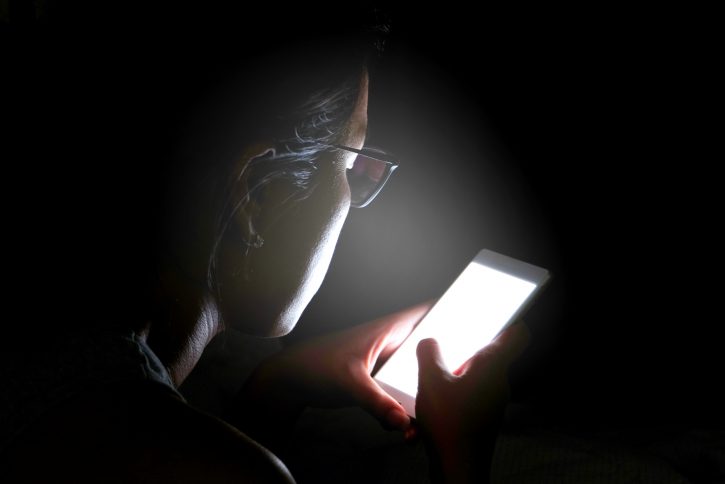
The “focus” of this article is on digital eyestrain and the importance of receiving regular, comprehensive eye exams. Many Americans know that digital devices can negatively affect their vision, but the average American still spends seven or more hours per day looking at their screens. Of course, for those of us who work on computers, that number is probably higher!
Overexposure to blue light – high-energy visible light emitted from digital devices – can lead to eye strain, sleep problems, blurred vision, headaches and neck and shoulder pain, among other things. Too much exposure to blue light adds up and also can lead to eye diseases like macular degeneration.
In a recent American Eye Association survey, it revealed that the average millennial spends nine hours per day looking at devices, such as smartphones, tablets, LED monitors and TVs, all of which emit blue light. As these devices become more ingrained in every day life, younger generations are at an increased risk for too much blue light exposure. Not only do children have their own tablets and phones, but their eyes are still developing the protective pigments that filter out blue light. Just like with UV radiation, most blue light exposure occurs before the age of 18.
The following tips explore ways people can protect their eyes and monitor digital screen usage while at home or work:
- Power down before you turn in. Turn your digital devices off at least one hour before bed.
- Unplug with the 20-20-20 rule. When you are using any device or computer, take a 20-second break every 20 minutes and focus your eyes on something at least 20 feet away. (It takes 20 seconds for your eyes to relax.)
- Take care of glare. While many new phones and laptops have glass screens with excellent picture quality, they also produce a strong glare that can aggravate the eyes. If you use a glass screen device, try a matte filter for your display.
- Stay at arm’s length. The eyes actually have to work harder to see close up than far away. If you have a desktop computer, try placing the monitor 25 inches away from your face. No measuring tape? Put your screen an arm’s length away. You may need to adjust the font to appear larger at that distance.
- Lighten up. When your screen is much brighter than your surroundings, your eyes have to work harder to see. Adjusting your environmental lighting can reduce eye strain. Also, try adjusting the contrast on your monitor.
You only get one pair of eyes; take care of them now to avoid long-term damage. Not to mention there is a beautiful world waiting just beyond your screen!
Get outside to enjoy the fresh air – your vision will thank you.